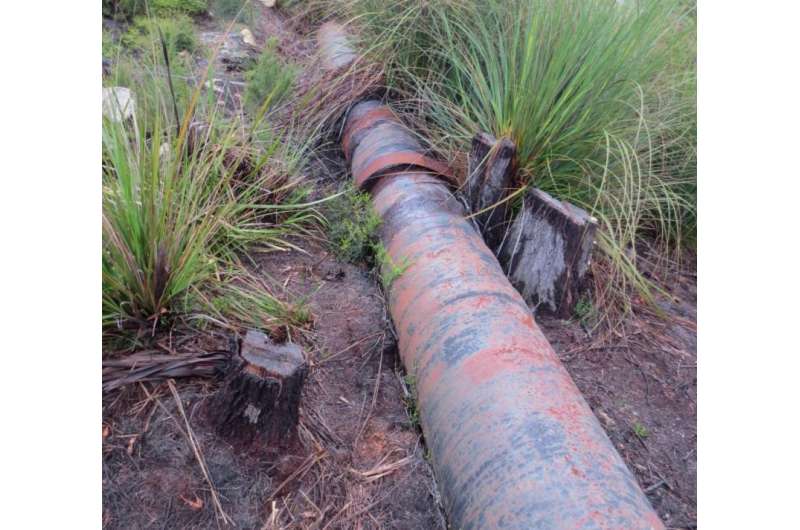High levels of lead contamination in northeast Tasmanian drinking water

A new study into lead contamination in North-East Tasmanian drinking water has revealed high levels of lead, from a surprising source.
Macquarie University researchers found potable water lead levels to be well above the Australian Drinking Water Guideline (10 µg/L), resulting from a combination of dilapidated drinking water infrastructure including lead jointed pipelines, end-of-life polyvinyl chloride pipes, and household plumbing.
The study utilised a range of scientific approaches, including lead isotopic compositions, to differentiate previously unknown sources of ongoing lead contamination in Pioneer and Ringarooma, with some results reaching 540µg/L in the supply network.
"Water lead isotopic compositions from across the catchment are markedly different from the local bedrock, indicating that the contamination is not naturally occurring," said lead author Paul Harvey.
"The study results show that the drinking water is being inadvertently contaminated by aging infrastructure, and is a public health issue that warrants immediate intervention to limit the burden of disease from lead exposure.
Past international research reports renal damage, anaemia and neuropathy as possible health effects of human lead toxicity.
As part of his ongoing PhD research, Harvey has identified similar results in the surrounding towns of the Ringarooma River catchment area, suggesting that the problem may be more widespread throughout broader Tasmania.
The prevalence of lead contamination of Australian drinking water supplies is relatively unknown, with only a small number of studies available, many of which focus on rain water tanks as a supply source.
Over several years Harvey has been conducting studies across Tasmania and New South Wales to identify the part aging infrastructure has to play in water lead contamination.
"Solutions to this problem are likely to involve the refurbishment of the infrastructure in one way or another, whether it be replacing or lining the pipes," said Harvey.
"Regardless, the study illustrates the need for further consideration of the understudied problem of water lead contamination."
More information: "Identification of the sources of metal (lead) contamination in drinking waters in north-eastern Tasmania using lead isotopic compositions." Environmental Science and Pollution Research DOI: 10.1007/s11356-015-4349-2
Journal information: Environmental Science and Pollution Research
Provided by Macquarie University


















